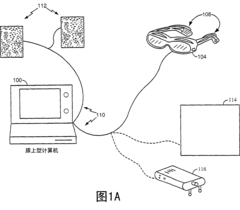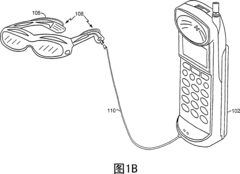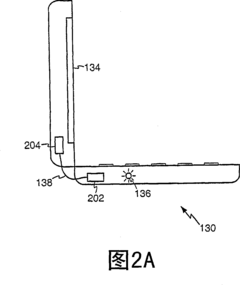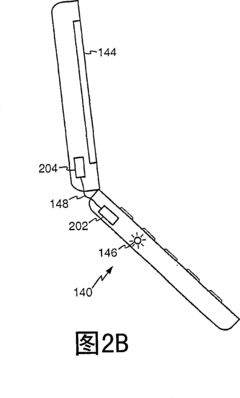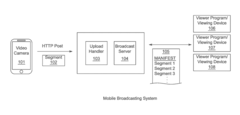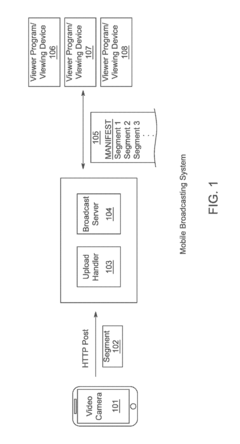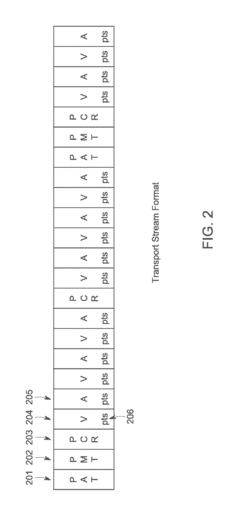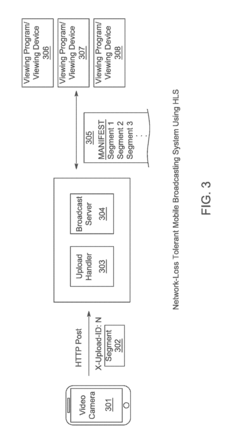How LDAC Facilitates Lossless Streaming in Mobile Devices?
JUL 4, 20259 MIN READ
Generate Your Research Report Instantly with AI Agent
Patsnap Eureka helps you evaluate technical feasibility & market potential.
LDAC Technology Overview and Objectives
LDAC (Low Latency Audio Codec) is a cutting-edge audio coding technology developed by Sony Corporation to address the growing demand for high-quality wireless audio streaming in mobile devices. As the audio industry continues to evolve, there has been an increasing focus on delivering lossless audio experiences to consumers, particularly in the mobile space where bandwidth and power constraints pose significant challenges.
The primary objective of LDAC technology is to enable the transmission of High-Resolution Audio content wirelessly, maintaining the original sound quality while minimizing latency. This ambitious goal aims to bridge the gap between wired and wireless audio experiences, offering mobile users the ability to enjoy studio-quality sound without the need for physical connections.
LDAC's development can be traced back to the early 2010s when Sony recognized the limitations of existing Bluetooth audio codecs in delivering high-fidelity sound. The technology was officially introduced in 2015 as part of Sony's push towards creating a more immersive and high-quality audio ecosystem for mobile devices.
The evolution of LDAC technology has been driven by several key factors, including the proliferation of high-resolution audio content, the increasing adoption of wireless headphones and speakers, and the growing consumer demand for superior audio experiences on mobile devices. These trends have shaped LDAC's development trajectory, focusing on maximizing audio quality while optimizing for the constraints of mobile environments.
One of the primary technical goals of LDAC is to achieve a maximum transfer rate of 990 kbps over Bluetooth connections. This ambitious target represents a significant leap forward compared to traditional Bluetooth audio codecs, which typically operate at much lower bitrates. By pushing the boundaries of wireless audio transmission, LDAC aims to preserve the nuances and details of high-resolution audio files, ensuring that mobile listeners can experience music as the artists and producers intended.
Another critical objective of LDAC technology is to maintain low latency during audio streaming. This is particularly important for applications such as gaming and video playback, where synchronization between audio and visual elements is crucial for an immersive experience. By minimizing delay in audio transmission, LDAC seeks to provide a more responsive and engaging user experience across various mobile applications.
As the audio industry continues to evolve, LDAC technology is expected to play a significant role in shaping the future of wireless audio streaming. Its development represents a broader trend towards lossless audio experiences in the mobile space, challenging the traditional trade-offs between audio quality and wireless convenience.
The primary objective of LDAC technology is to enable the transmission of High-Resolution Audio content wirelessly, maintaining the original sound quality while minimizing latency. This ambitious goal aims to bridge the gap between wired and wireless audio experiences, offering mobile users the ability to enjoy studio-quality sound without the need for physical connections.
LDAC's development can be traced back to the early 2010s when Sony recognized the limitations of existing Bluetooth audio codecs in delivering high-fidelity sound. The technology was officially introduced in 2015 as part of Sony's push towards creating a more immersive and high-quality audio ecosystem for mobile devices.
The evolution of LDAC technology has been driven by several key factors, including the proliferation of high-resolution audio content, the increasing adoption of wireless headphones and speakers, and the growing consumer demand for superior audio experiences on mobile devices. These trends have shaped LDAC's development trajectory, focusing on maximizing audio quality while optimizing for the constraints of mobile environments.
One of the primary technical goals of LDAC is to achieve a maximum transfer rate of 990 kbps over Bluetooth connections. This ambitious target represents a significant leap forward compared to traditional Bluetooth audio codecs, which typically operate at much lower bitrates. By pushing the boundaries of wireless audio transmission, LDAC aims to preserve the nuances and details of high-resolution audio files, ensuring that mobile listeners can experience music as the artists and producers intended.
Another critical objective of LDAC technology is to maintain low latency during audio streaming. This is particularly important for applications such as gaming and video playback, where synchronization between audio and visual elements is crucial for an immersive experience. By minimizing delay in audio transmission, LDAC seeks to provide a more responsive and engaging user experience across various mobile applications.
As the audio industry continues to evolve, LDAC technology is expected to play a significant role in shaping the future of wireless audio streaming. Its development represents a broader trend towards lossless audio experiences in the mobile space, challenging the traditional trade-offs between audio quality and wireless convenience.
Market Demand for High-Quality Audio Streaming
The demand for high-quality audio streaming in mobile devices has been steadily increasing over the past decade. This trend is driven by several factors, including the widespread adoption of smartphones, the growth of music streaming services, and the rising consumer expectations for audio quality. As mobile devices become the primary means of consuming music for many users, there is a growing desire for lossless audio experiences that rival or surpass traditional high-fidelity systems.
The market for premium audio streaming services has expanded significantly, with major players like Tidal, Amazon Music HD, and Apple Music offering lossless and high-resolution audio options. This shift indicates a clear consumer appetite for superior audio quality, even in mobile environments. The willingness of consumers to pay for these premium services underscores the value placed on high-fidelity audio experiences.
Mobile device manufacturers have responded to this demand by incorporating advanced audio hardware and software solutions into their products. This includes the integration of high-quality DACs (Digital-to-Analog Converters), support for high-resolution audio formats, and the implementation of advanced Bluetooth codecs like LDAC. These features are often highlighted as key selling points for flagship smartphones and tablets, demonstrating the market's recognition of audio quality as a differentiating factor.
The rise of wireless headphones and earbuds has further fueled the demand for high-quality audio streaming on mobile devices. As consumers invest in premium audio accessories, they expect their mobile devices to deliver audio that matches the capabilities of their headphones. This has created a symbiotic relationship between mobile device manufacturers and audio accessory makers, driving innovation in wireless audio transmission technologies.
The automotive industry has also contributed to the growing demand for high-quality audio streaming in mobile environments. With the increasing integration of smartphone connectivity in vehicles, consumers expect seamless audio streaming from their mobile devices to their car's audio system without compromising on quality. This has led to collaborations between automakers and technology companies to implement advanced audio codecs and streaming solutions.
The COVID-19 pandemic has accelerated the trend towards high-quality audio streaming on mobile devices. With more people working and studying from home, there has been an increased focus on audio quality for video conferencing, online learning, and entertainment. This shift has heightened awareness of audio quality across various use cases, further driving demand for lossless streaming solutions in mobile devices.
As the market for high-quality audio streaming continues to grow, there is an ongoing challenge to balance audio quality with bandwidth limitations and battery life considerations in mobile devices. This creates opportunities for innovative technologies like LDAC to address these challenges and meet the evolving demands of consumers for superior audio experiences on their mobile devices.
The market for premium audio streaming services has expanded significantly, with major players like Tidal, Amazon Music HD, and Apple Music offering lossless and high-resolution audio options. This shift indicates a clear consumer appetite for superior audio quality, even in mobile environments. The willingness of consumers to pay for these premium services underscores the value placed on high-fidelity audio experiences.
Mobile device manufacturers have responded to this demand by incorporating advanced audio hardware and software solutions into their products. This includes the integration of high-quality DACs (Digital-to-Analog Converters), support for high-resolution audio formats, and the implementation of advanced Bluetooth codecs like LDAC. These features are often highlighted as key selling points for flagship smartphones and tablets, demonstrating the market's recognition of audio quality as a differentiating factor.
The rise of wireless headphones and earbuds has further fueled the demand for high-quality audio streaming on mobile devices. As consumers invest in premium audio accessories, they expect their mobile devices to deliver audio that matches the capabilities of their headphones. This has created a symbiotic relationship between mobile device manufacturers and audio accessory makers, driving innovation in wireless audio transmission technologies.
The automotive industry has also contributed to the growing demand for high-quality audio streaming in mobile environments. With the increasing integration of smartphone connectivity in vehicles, consumers expect seamless audio streaming from their mobile devices to their car's audio system without compromising on quality. This has led to collaborations between automakers and technology companies to implement advanced audio codecs and streaming solutions.
The COVID-19 pandemic has accelerated the trend towards high-quality audio streaming on mobile devices. With more people working and studying from home, there has been an increased focus on audio quality for video conferencing, online learning, and entertainment. This shift has heightened awareness of audio quality across various use cases, further driving demand for lossless streaming solutions in mobile devices.
As the market for high-quality audio streaming continues to grow, there is an ongoing challenge to balance audio quality with bandwidth limitations and battery life considerations in mobile devices. This creates opportunities for innovative technologies like LDAC to address these challenges and meet the evolving demands of consumers for superior audio experiences on their mobile devices.
LDAC Technical Challenges and Limitations
LDAC, while offering significant advancements in wireless audio transmission, faces several technical challenges and limitations. One primary concern is the high computational demands of the codec, which can strain the processing capabilities of mobile devices. This increased processing load can lead to higher power consumption, potentially impacting battery life, especially during extended listening sessions.
Another challenge lies in maintaining consistent high-quality transmission across varying wireless environments. LDAC's adaptive bitrate system, while innovative, may struggle to maintain optimal performance in areas with significant electromagnetic interference or when the device is at the edge of the Bluetooth range. This can result in occasional audio dropouts or quality degradation, compromising the lossless audio experience.
The codec's reliance on Bluetooth technology also introduces inherent limitations. Despite LDAC's impressive bitrate of up to 990 kbps, it still operates within the constraints of Bluetooth bandwidth. This can become problematic when attempting to stream ultra-high-resolution audio files or when multiple high-bandwidth Bluetooth devices are operating in close proximity.
Compatibility issues present another hurdle for LDAC. As a proprietary technology developed by Sony, its adoption is not universal across all mobile devices and audio equipment. This fragmentation in the market can lead to inconsistent user experiences and limit the overall ecosystem of LDAC-compatible devices.
The complexity of LDAC's encoding and decoding processes also poses challenges for real-time applications. While the codec excels in providing high-quality audio, the intricate algorithms involved can introduce latency, which may be noticeable in scenarios requiring precise audio-visual synchronization, such as gaming or video playback.
Furthermore, the pursuit of lossless audio quality in mobile environments raises questions about the perceptible benefits for average consumers. The nuances of lossless audio may be lost on many users, especially when listening in non-ideal acoustic environments or through lower-quality headphones. This creates a challenge in justifying the increased complexity and potential trade-offs in battery life and device compatibility.
Lastly, the implementation of LDAC in mobile devices must contend with the physical limitations of miniaturization. Integrating high-performance audio processing capabilities while maintaining the sleek form factors expected of modern mobile devices presents ongoing engineering challenges. Balancing audio quality with other critical mobile features like camera performance, display technology, and overall device thinness requires careful consideration and often involves compromises.
Another challenge lies in maintaining consistent high-quality transmission across varying wireless environments. LDAC's adaptive bitrate system, while innovative, may struggle to maintain optimal performance in areas with significant electromagnetic interference or when the device is at the edge of the Bluetooth range. This can result in occasional audio dropouts or quality degradation, compromising the lossless audio experience.
The codec's reliance on Bluetooth technology also introduces inherent limitations. Despite LDAC's impressive bitrate of up to 990 kbps, it still operates within the constraints of Bluetooth bandwidth. This can become problematic when attempting to stream ultra-high-resolution audio files or when multiple high-bandwidth Bluetooth devices are operating in close proximity.
Compatibility issues present another hurdle for LDAC. As a proprietary technology developed by Sony, its adoption is not universal across all mobile devices and audio equipment. This fragmentation in the market can lead to inconsistent user experiences and limit the overall ecosystem of LDAC-compatible devices.
The complexity of LDAC's encoding and decoding processes also poses challenges for real-time applications. While the codec excels in providing high-quality audio, the intricate algorithms involved can introduce latency, which may be noticeable in scenarios requiring precise audio-visual synchronization, such as gaming or video playback.
Furthermore, the pursuit of lossless audio quality in mobile environments raises questions about the perceptible benefits for average consumers. The nuances of lossless audio may be lost on many users, especially when listening in non-ideal acoustic environments or through lower-quality headphones. This creates a challenge in justifying the increased complexity and potential trade-offs in battery life and device compatibility.
Lastly, the implementation of LDAC in mobile devices must contend with the physical limitations of miniaturization. Integrating high-performance audio processing capabilities while maintaining the sleek form factors expected of modern mobile devices presents ongoing engineering challenges. Balancing audio quality with other critical mobile features like camera performance, display technology, and overall device thinness requires careful consideration and often involves compromises.
Current LDAC Implementation Strategies
01 LDAC codec for high-quality audio streaming
LDAC is a high-resolution audio codec developed for Bluetooth audio streaming. It allows for the transmission of high-quality audio data at higher bitrates compared to standard Bluetooth codecs, enabling near-lossless audio streaming. LDAC supports various sampling rates and bit depths, making it suitable for a wide range of audio applications.- LDAC codec for high-quality audio streaming: LDAC is a codec technology developed for high-quality audio streaming over Bluetooth connections. It allows for the transmission of audio data at higher bit rates compared to standard Bluetooth codecs, enabling near-lossless audio quality. LDAC supports various bit rates and can adapt to different network conditions to maintain optimal audio performance.
- Adaptive bit rate control for audio streaming: Adaptive bit rate control techniques are employed in LDAC streaming to optimize audio quality based on network conditions. These methods dynamically adjust the bit rate and compression level to maintain a balance between audio quality and connection stability. This ensures a consistent streaming experience even in challenging network environments.
- Error correction and packet loss concealment: To ensure lossless streaming, LDAC incorporates advanced error correction and packet loss concealment techniques. These methods help recover lost or corrupted data during transmission, maintaining the integrity of the audio stream. Such techniques contribute to the overall robustness and reliability of LDAC lossless streaming.
- Efficient audio data compression algorithms: LDAC utilizes sophisticated audio data compression algorithms to achieve high efficiency in data transmission while preserving audio quality. These algorithms are designed to minimize data loss during compression and decompression processes, enabling near-lossless audio reproduction at the receiving end.
- Integration with audio processing systems: LDAC lossless streaming technology can be integrated into various audio processing systems and devices. This integration allows for seamless compatibility with different audio sources, playback devices, and streaming platforms. It enables high-quality audio streaming across a wide range of consumer electronics and professional audio equipment.
02 Adaptive bitrate control for LDAC streaming
LDAC incorporates adaptive bitrate control mechanisms to optimize audio quality based on network conditions and device capabilities. This feature allows the codec to dynamically adjust the bitrate and compression level to maintain a stable connection while maximizing audio quality. The system can switch between different quality modes to balance performance and power consumption.Expand Specific Solutions03 Integration of LDAC with audio processing systems
LDAC can be integrated into various audio processing systems and devices to enhance the overall audio streaming experience. This includes implementation in smartphones, wireless headphones, speakers, and other audio equipment. The codec can work in conjunction with other audio technologies such as noise cancellation and spatial audio processing to deliver immersive sound experiences.Expand Specific Solutions04 Error correction and packet loss concealment in LDAC
To maintain high-quality audio streaming, LDAC employs advanced error correction and packet loss concealment techniques. These methods help to minimize the impact of data transmission errors and packet losses on the perceived audio quality. The system can reconstruct lost or corrupted audio data to ensure a seamless listening experience even in challenging wireless environments.Expand Specific Solutions05 Compatibility and interoperability of LDAC
LDAC is designed to be compatible with various Bluetooth audio profiles and can coexist with other audio codecs. This ensures interoperability across different devices and platforms. The codec supports seamless switching between LDAC and other codecs based on device support and user preferences, allowing for a flexible and user-friendly audio streaming experience.Expand Specific Solutions
Key Players in LDAC and Audio Codec Industry
The LDAC technology for lossless streaming in mobile devices is in a mature development stage, with significant market potential as high-quality audio becomes increasingly important for consumers. The market size is expanding rapidly, driven by the growing demand for premium audio experiences on smartphones and other portable devices. Major players like Sony, Samsung, LG, and Qualcomm are actively involved in developing and implementing LDAC technology. Sony, as the originator of LDAC, holds a strong position, while other companies are integrating it into their devices and chipsets to enhance audio capabilities. The competitive landscape is characterized by collaboration and licensing agreements among tech giants to ensure widespread adoption of this high-resolution audio codec.
QUALCOMM, Inc.
Technical Solution: Qualcomm has developed aptX Lossless, a codec that competes with LDAC in facilitating lossless streaming for mobile devices. aptX Lossless can deliver CD-quality 16-bit/44.1kHz lossless audio over Bluetooth, scaling from 1Mbps to 140kbps[5]. The technology employs a first-of-its-kind auto-adjusting bit rate capability, ensuring consistent lossless audio quality even when RF interference is present[6]. Qualcomm's implementation includes Snapdragon Sound technology, which optimizes the entire audio chain from source to earbuds or speakers, ensuring minimal latency and robust connectivity[7].
Strengths: Scalable bit rate for consistent quality, integration with Snapdragon platforms for optimized performance. Weaknesses: Limited to devices with Qualcomm chipsets, potentially higher latency compared to LDAC in some scenarios.
Samsung Electronics Co., Ltd.
Technical Solution: Samsung has implemented support for LDAC in its Galaxy series smartphones and tablets, enhancing lossless streaming capabilities for mobile users. While not developing its own high-resolution Bluetooth codec, Samsung has focused on optimizing its hardware and software to fully utilize LDAC's potential. The company's latest flagship devices feature advanced Bluetooth audio processing chips that can handle LDAC's high bit rates efficiently[8]. Samsung has also integrated LDAC support into its Galaxy Wearable app, allowing users to easily switch between different Bluetooth codecs and quality settings[9].
Strengths: Wide adoption of LDAC across product range, optimized hardware for high-quality audio streaming. Weaknesses: Reliance on third-party codec technology, potential limitations in customization.
Core Innovations in LDAC Technology
High data rate interface apparatus and method
PatentInactiveCN1977511A
Innovation
- A Mobile Data Digital Interface (MDDI) was developed that uses multiple or a series of linked packet structures to form a communication protocol to pass digital control and presentation data between host and client devices, using differential drivers and receivers to support HDTV-plus resolution and 7.1 audio, with low power consumption and low complexity, suitable for portable systems.
Network-Loss Tolerant Mobile Broadcast Systems and Algorithms
PatentActiveUS20170085936A1
Innovation
- The system uses unique metadata, known as Upload IDs, to identify and manage video segments, ensuring they are received and broadcast in the correct sequence, and employs a Reordering Buffer Manager to handle out-of-order segments, preventing disruptions and allowing late arrivals to be broadcast correctly.
Compatibility and Ecosystem Integration
LDAC's compatibility and ecosystem integration play a crucial role in facilitating lossless streaming on mobile devices. The technology's widespread adoption across various platforms and devices has significantly contributed to its success in the mobile audio streaming landscape.
Android, being the most popular mobile operating system, has integrated LDAC as a native codec since version 8.0 (Oreo). This integration ensures seamless compatibility with a wide range of Android-powered smartphones and tablets from different manufacturers. The native support eliminates the need for additional software or drivers, making it easier for users to enjoy high-quality audio streaming out of the box.
In addition to Android devices, LDAC has also been adopted by numerous audio equipment manufacturers. Many Bluetooth headphones, earbuds, and speakers from renowned brands such as Sony, Audio-Technica, and Fiio now support LDAC. This widespread support creates a robust ecosystem of compatible devices, allowing users to experience lossless audio streaming across various audio peripherals.
The integration of LDAC into popular music streaming services has further expanded its ecosystem. Services like Tidal, Qobuz, and Amazon Music HD have embraced LDAC, enabling subscribers to stream high-resolution audio content directly to their compatible devices. This integration ensures that users can access a vast library of lossless audio tracks without compromising on quality during wireless transmission.
LDAC's compatibility extends beyond consumer devices to professional audio equipment. Many digital audio players (DAPs) and portable amplifiers now support LDAC, catering to audiophiles and music professionals who demand the highest audio quality in mobile scenarios. This expansion into the professional audio market further solidifies LDAC's position as a versatile and widely adopted technology.
The ecosystem integration of LDAC also benefits from its open-source nature. Sony has made the LDAC source code available through the Android Open Source Project (AOSP), allowing developers and manufacturers to implement and optimize the codec for their specific devices. This openness has led to improved compatibility and performance across a diverse range of hardware configurations.
Furthermore, LDAC's integration with other audio technologies has enhanced its overall compatibility. For instance, its compatibility with aptX and AAC codecs ensures that devices can fall back to these alternatives when LDAC is not available, providing a seamless audio experience across different scenarios and device combinations.
In conclusion, LDAC's extensive compatibility and robust ecosystem integration have been instrumental in its success as a lossless streaming solution for mobile devices. The widespread support across Android devices, audio equipment, streaming services, and professional gear creates a cohesive ecosystem that enables users to enjoy high-quality audio streaming in various mobile contexts.
Android, being the most popular mobile operating system, has integrated LDAC as a native codec since version 8.0 (Oreo). This integration ensures seamless compatibility with a wide range of Android-powered smartphones and tablets from different manufacturers. The native support eliminates the need for additional software or drivers, making it easier for users to enjoy high-quality audio streaming out of the box.
In addition to Android devices, LDAC has also been adopted by numerous audio equipment manufacturers. Many Bluetooth headphones, earbuds, and speakers from renowned brands such as Sony, Audio-Technica, and Fiio now support LDAC. This widespread support creates a robust ecosystem of compatible devices, allowing users to experience lossless audio streaming across various audio peripherals.
The integration of LDAC into popular music streaming services has further expanded its ecosystem. Services like Tidal, Qobuz, and Amazon Music HD have embraced LDAC, enabling subscribers to stream high-resolution audio content directly to their compatible devices. This integration ensures that users can access a vast library of lossless audio tracks without compromising on quality during wireless transmission.
LDAC's compatibility extends beyond consumer devices to professional audio equipment. Many digital audio players (DAPs) and portable amplifiers now support LDAC, catering to audiophiles and music professionals who demand the highest audio quality in mobile scenarios. This expansion into the professional audio market further solidifies LDAC's position as a versatile and widely adopted technology.
The ecosystem integration of LDAC also benefits from its open-source nature. Sony has made the LDAC source code available through the Android Open Source Project (AOSP), allowing developers and manufacturers to implement and optimize the codec for their specific devices. This openness has led to improved compatibility and performance across a diverse range of hardware configurations.
Furthermore, LDAC's integration with other audio technologies has enhanced its overall compatibility. For instance, its compatibility with aptX and AAC codecs ensures that devices can fall back to these alternatives when LDAC is not available, providing a seamless audio experience across different scenarios and device combinations.
In conclusion, LDAC's extensive compatibility and robust ecosystem integration have been instrumental in its success as a lossless streaming solution for mobile devices. The widespread support across Android devices, audio equipment, streaming services, and professional gear creates a cohesive ecosystem that enables users to enjoy high-quality audio streaming in various mobile contexts.
Power Consumption and Battery Life Implications
The implementation of LDAC (Low Latency Audio Codec) in mobile devices for lossless streaming has significant implications for power consumption and battery life. As a high-resolution audio codec, LDAC requires more processing power compared to traditional lossy codecs, which can lead to increased energy demands on mobile devices.
The power consumption of LDAC varies depending on the bitrate and quality settings chosen. At its highest quality setting of 990 kbps, LDAC demands more computational resources, resulting in higher power draw from the device's processor. This increased processing load can lead to faster battery depletion, especially during extended listening sessions.
However, LDAC's adaptive bitrate feature allows for dynamic adjustments based on connection stability and device capabilities. This adaptability helps optimize power usage by scaling down to lower bitrates when necessary, balancing audio quality with energy efficiency. The codec can operate at 330 kbps or 660 kbps, which reduces power consumption compared to its maximum bitrate setting.
Mobile device manufacturers have implemented various strategies to mitigate the power impact of LDAC. These include optimizing chipset designs for more efficient audio processing and integrating dedicated low-power audio processors. Such hardware optimizations help offload the main CPU, reducing overall power consumption during LDAC streaming.
Battery life implications also depend on the device's overall power management system. Modern smartphones employ sophisticated power-saving algorithms that can detect high-drain activities like LDAC streaming and adjust system resources accordingly. This may involve throttling other background processes or adjusting screen brightness to compensate for the increased power draw of high-quality audio playback.
The impact on battery life can vary significantly between different mobile devices. Flagship models with larger batteries and more efficient processors may handle LDAC streaming with minimal noticeable effect on overall battery life. In contrast, mid-range or older devices might experience more substantial battery drain when using LDAC for extended periods.
It's worth noting that the power consumption of LDAC should be considered in the context of the entire audio streaming chain. While the codec itself may require more energy, it can potentially reduce power usage in other areas. For instance, by enabling high-quality streaming over Bluetooth, LDAC may eliminate the need for users to download and store large lossless audio files locally, which could otherwise impact battery life through increased storage access and management.
The power consumption of LDAC varies depending on the bitrate and quality settings chosen. At its highest quality setting of 990 kbps, LDAC demands more computational resources, resulting in higher power draw from the device's processor. This increased processing load can lead to faster battery depletion, especially during extended listening sessions.
However, LDAC's adaptive bitrate feature allows for dynamic adjustments based on connection stability and device capabilities. This adaptability helps optimize power usage by scaling down to lower bitrates when necessary, balancing audio quality with energy efficiency. The codec can operate at 330 kbps or 660 kbps, which reduces power consumption compared to its maximum bitrate setting.
Mobile device manufacturers have implemented various strategies to mitigate the power impact of LDAC. These include optimizing chipset designs for more efficient audio processing and integrating dedicated low-power audio processors. Such hardware optimizations help offload the main CPU, reducing overall power consumption during LDAC streaming.
Battery life implications also depend on the device's overall power management system. Modern smartphones employ sophisticated power-saving algorithms that can detect high-drain activities like LDAC streaming and adjust system resources accordingly. This may involve throttling other background processes or adjusting screen brightness to compensate for the increased power draw of high-quality audio playback.
The impact on battery life can vary significantly between different mobile devices. Flagship models with larger batteries and more efficient processors may handle LDAC streaming with minimal noticeable effect on overall battery life. In contrast, mid-range or older devices might experience more substantial battery drain when using LDAC for extended periods.
It's worth noting that the power consumption of LDAC should be considered in the context of the entire audio streaming chain. While the codec itself may require more energy, it can potentially reduce power usage in other areas. For instance, by enabling high-quality streaming over Bluetooth, LDAC may eliminate the need for users to download and store large lossless audio files locally, which could otherwise impact battery life through increased storage access and management.
Unlock deeper insights with Patsnap Eureka Quick Research — get a full tech report to explore trends and direct your research. Try now!
Generate Your Research Report Instantly with AI Agent
Supercharge your innovation with Patsnap Eureka AI Agent Platform!
